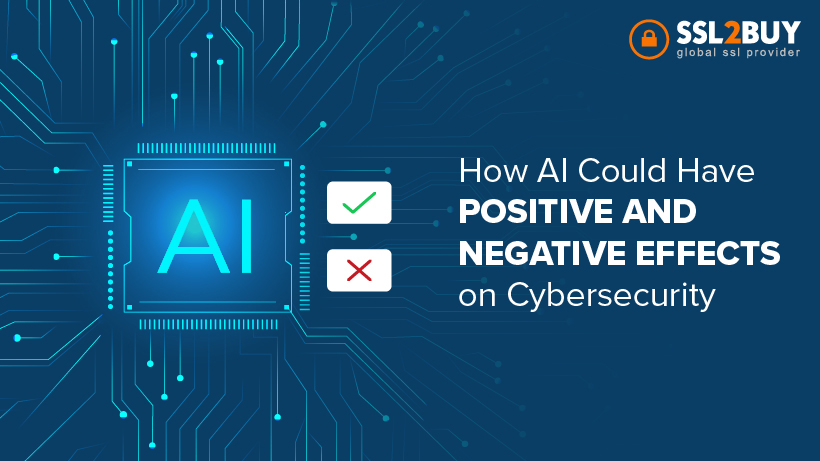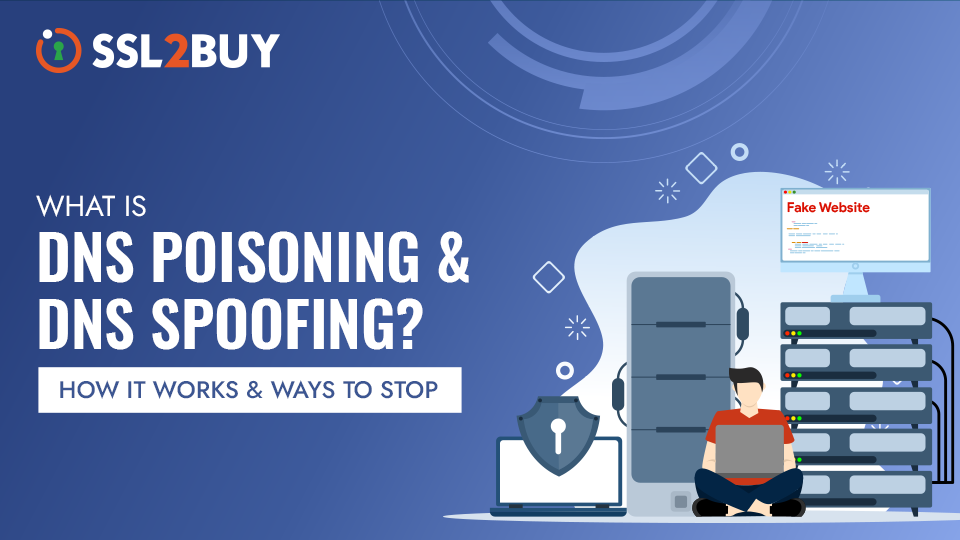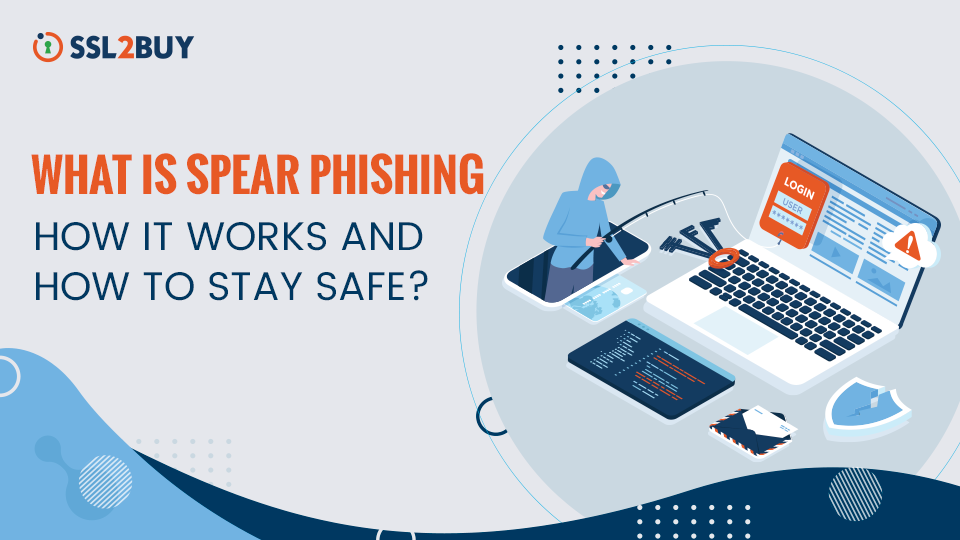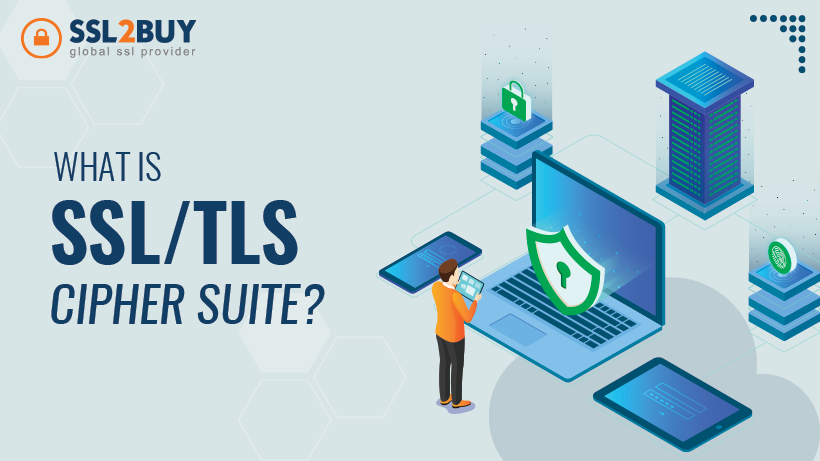
How AI-Driven Cybersecurity Defends and Disrupts the Digital World?
Artificial Intelligence is a game-changer technology that has created a buzz in today’s market, which we believe you can agree on. How has AI become a game changer in such a short span of time? Well, the hype is real, and it is because of the revolutionary tools and technologies that come into the market.
That’s the one side of the coin! What about the other side?
Yes, with these modern AI technologies, there is a fear which we overlooked and that’s security. We are much into the use of such tech and tools but we haven’t thought about the lack of security that they bring.
The adoption of AI in the market has increased significantly, offering various advantages. However, hackers are also using the power of AI to carry out cyberattacks more effectively.
This means Artificial Intelligence will remain at the top of both development of threats and security capabilities.
According to the Finnish Transport & Communications Agency 2022 report [1], AI-enabled assaults are already a threat that enterprises cannot handle. Furthermore, as AI technique progresses and AI expertise becomes more generally available, these security vulnerabilities will only increase.
There comes a need for strong cybersecurity especially while using AI. In this article, we will deep delve into how AI could have positive and negative effects on cybersecurity. So, let’s get started!
An Overview of Artificial Intelligence in Cybersecurity
AI in cybersecurity helps the organization detect threats before they occur. It analyzes massive amounts of data to detect patterns that indicate potential cyber threats. AI can also scan the entire network for loopholes, preventing common cyber attacks like bots and phishing.
In cybersecurity, AI is designed to monitor behavior patterns, and by using these patterns as the base, AI can detect unusual behavior and restrict unauthorized access to the system. AI can also help security operators prioritize risk by instantly detecting the possibilities of malware and intrusion before they even occur. Furthermore, AI can also reduce the possibility of human errors by removing manual, repetitive tasks.
Use of AI in Cybersecurity
- Analyzing behavior patterns
- Detecting unusual behavior
- Restrict unauthorized access
- Scan massive amount of data
- Identify and prioritize threats (for example, zero-day attack)
If implemented accurately, AI can become a security engine, automating security tasks, freeing up resources and time for security professionals. The innovative concept of AI in cybersecurity has gained massive traction and companies have started investing in AI-powered security systems.
| Market Size | USD 80.83 Billion (Projected by 2030) [2] |
| Largest Share of AI in Cybersecurity Market (By geography) | North America (Followed by Europe, Asia Pacific & rest of the world) |
| Key Players | IBM Corporation, Intel, Micron, Amazon Web Services, Inc., & Samsung Electronics Co |
| Technology | Machine learning, natural language processing, context-aware computing. |
| Application | Antivirus, data loss prevention, fraud detection, intrusion detection, security and vulnerability management, unified threat management. |
Now that we know how AI in cybersecurity works and learn about its AI’s market size, key players, and technology used, it’s time to see the positive effects of AI on cybersecurity.
The Positive Effects of AI on Cybersecurity
Artificial intelligence has brought lots of positive effects on cybersecurity. AI is considered an important element of protection against cybersecurity threats, as it can detect and stop threats in real-time without interfering with the business processes and can track data that escapes human eyes including chats, emails, video and other modes of communications. Let’s understand the positive effects of AI on cybersecurity.
Identifying Unknown Threats
Every year, hackers carry out countless attacks, each with its own agenda. A business’s risks are often too complex for one person to fully grasp. To combat hackers’ ever-changing tactics, from viruses to sophisticated social engineering, companies must use advanced methods like AI to identify and thwart emerging threats before they can damage the business. That’s why in such cases, Artificial Intelligence is a top security technology that businesses can rely on to identify unknown threats from harming a business.
System Vulnerability Management
Securing a company’s network relies heavily on vulnerability management of the system. It has already been said that the typical business faces several dangers on a daily basis. In order to be safe, it must be able to detect, identify, and prevent them. Vulnerability management may benefit from AI-based analyses and evaluations of current security solutions.
You can examine network systems faster than cybersecurity experts with the use of AI, which greatly enhances your problem-solving abilities. It aids companies in concentrating on critical security duties by identifying weak spots in computer systems and corporate networks. That allows for timely vulnerability management and secure business system implementation.
Encryption
When it comes to encryption, one of the main lines of defense against cyber-attacks, artificial intelligence provides a significant edge. Cybercriminals will have a very hard time deciphering or cracking encryption keys generated by AI algorithms since they are significantly more complicated than keys generated by conventional techniques.
Information is encrypted using cipher keys so that it can only be decrypted with the matching decryption key.
Accelerates Detection and Timely Response
The first step in keeping your business’s network secure is identifying potential threats. If you could swiftly identify things like untrustworthy data, it would be great. By continuously evaluating your entire system, AI simplifies security tasks and spots dangers far earlier than humans can, allowing you to prevent permanent harm. Combining cybersecurity with AI’s comprehensive threat detection enables the fastest response against vulnerabilities.
Eliminates Redundancy
AI can automate tedious manual tasks like data processing, analysis, collection, and storage. This allows security experts to scan data faster, identify threats more accurately, reduce false positives, and save significant time and energy. As a result, security experts can devote their efforts to more critical security issues.
Incident Response
AI has the potential to automate incident response, which may reduce damage and speed up recovery. Because AI can detect dangers and react to them instantly, humans don’t need to do it. Using AI, we may automate processes like quarantining compromised devices or reverting modifications done by an attacker.
Network Security
It is possible to teach AI algorithms to detect unauthorized devices on a network, suspicious activities, and strange traffic patterns. By detecting anomalies, AI can enhance network security. Finding unusual patterns in network traffic is what this entails.
Artificial intelligence systems may learn the typical behaviour of a network and spot suspicious or unusual traffic by examining past data, odd protocol use, traffic from questionable IP addresses, or odd port utilization might all fall within this category.
Breach Prediction
When it comes to reducing breach risk and strengthening security posture, cybersecurity professionals rely on AI for much-needed analysis and threat detection. AI can classify threats, detect malware on a network in a second, direct incident response, and even prevent attacks. With the use of AI, cybersecurity teams can build strong human-machine relationships that boost cybersecurity, improve our lives, and increase our knowledge.
Real-World Examples – The Positive Use of AI in Cybersecurity
Today, many seasoned security professionals are constantly juggling the battle against sophisticated cybercrimes. But the inception of generative AI has changed the game. Right from Google to conquering national threats, organizations have started implementing AI to forge their cybersecurity strategies. Here are a few real-life examples of how artificial intelligence can enhance cybersecurity.
Undercovered AI threats by US adversaries
When it happened: US (2024)
How It happened: US adversaries are using AI for offensive cyber operations against the US. The threat is laid out by two Chinese government-affiliated hacking groups along with North Korea, Iran and Russia.
Role of AI : Microsoft in collaboration with OpenAI have uncovered these threats. The hackers are using OpenAI services for querying open-source information, translating and finding coding errors and running basic coding tasks. Microsoft and OpenAI [3] disrupted efforts made by these five state-affiliated actors that used its AI services to perform malicious cyber activities by terminating their assets and accounts.
Preventing Pool Party Process Injection
When it happened: US (2024)
How It happened: SafeBreach, a cybersecurity company found 8 new process injections techniques that can affect Windows thread pools, triggering malicious code execution. The injections work undetected by many EDR systems.
Role of AI : BlackBerry [4] analyzed the attack chain and revealed allocated memory in the running process. It also monitored remote allocation of memory violations under process injection. It is found that CylanceENDPOINT solution’s AI capabilities automatically flag the threat as unsafe.
The Negative Effects of AI on Cybersecurity
To start, criminals may use AI to launch increasingly sophisticated assaults, like automated threats, against our security systems and solutions. More specifically, they can automate attack launch processes using AI and ML capabilities; for instance, they can build bots that can execute massive phishing operations. Here are many more possibilities that can have negative impacts on cybersecurity:
AI Can Be Misused
We often consider technology as a good-to-go thing which is not true every time. Even good things have their own drawbacks which AI has in terms of using it maliciously. In fact, AI algorithms are designed in such a way that it can help you search through data and detect patterns quickly. Well, that’s a bread on butter for hackers as they see this as an opportunity and use them to access information or attack infrastructure.
Hackers Can Trick AI By Spoofing Websites
Adversarial assaults may trick security systems that rely on AI. Simply said, adversarial assaults occur when a malicious actor attempts to trick a machine learning system by manipulating its input data. For example, a malicious actor may construct a spoof website that seems to be the actual thing, fooling the AI-based security system into believing it is authentic.
Bias Decision-Making
AI systems may exhibit unfair discrimination due to a variety of factors, including skewed training data or unreliable algorithms. If these biases are not properly monitored, they may lead to decisions that discriminate against particular individuals or groups, which could be extremely dangerous for the business.
AI Can Be Used To Execute Cyberattacks
According to experts, generative AI and large language models can be used to execute cyberattacks [5]. Well, that’s the concern, and these techs can help attackers implement cloud vulnerabilities and capitalize on geopolitical conflicts. Additionally, generative AI enables hackers to use malicious techniques like ransomware, phishing, and others.
Real-World Examples – The Negative Use of AI in Cybersecurity
Every technology has two sides, and so does artificial intelligence. As days passed, hackers have started using this technique for creating more sophisticated scams. Here are a few recent examples of how can hackers fooled professionals using AI, enhancing their success probabilities.
AI-driven data mining malware
When it happened: UK (2023)
How it happened: Forcepoint security researcher Aaron Mulgrew [6] leveraged the generative capabilities of ChatGPT to create a code function with separate lines. After combing the functions, he realized he had created an undetectable data-stealing malware.
Role of AI: The incident is alarming as Aaron created very dangerous malware without any technical support from professional hacks or a professional tech team. The malware starts disguising itself as a screensaver app that auto-launches onto Windows devices, scrubs all files and steals the device’s data.
AI-generated malicious packages
When it happened: Israel (2023)
How it happened: In a recent attempt [7], hackers used the powerful AI capabilities of ChatGPT to deliver malicious packages [8] for creating AI hallucinations to attack cloud-based systems. By using ChatGPT, hackers exploit fabricated code libraries that are maliciously distributed and stay undetected in traditional security methods.
Role of AI: Using ChatGPT, hackers prompt for a package that can solve a coding problem. To which ChatGPT responds with multiple packages, some of which may not exist and are unpublished. This is where things get dangerous. When the hacker finds a recommendation for an unpublished package, they can publish their malicious package in its place. So, next time when the user asks for a similar prompt to ChatGPT, he receives a malicious package from ChatGPT. Developers use this malicious package, resulting in hacking the entire system.
Best Cybersecurity Strategies to Mitigate AI Risks
In the AI era, it is essential to practice the best cybersecurity strategies that help to mitigate potential risks to organizations. Here are the best cybersecurity strategies to mitigate AI risk.
- Regularly conduct data quality assessments to acknowledge valid data.
- Use popular AI models that’s trusted and tested for security vulnerabilities.
- Ensure data governance that the data is properly stored, protected, and managed throughout its life cycle.
- Implement threat modeling practices to identify potential security threats, including data breaches, AI model bias, and unauthorized access.
- Adopt access management policies for authorized identities to stay updated with the rising AI landscape.
- Integrate encrypted technologies like watermarking to your data to protect and track AI-generated data.
- Keep your devices updated with the latest security version for end-point security and regularly clean unnecessary files.
These above mentioned are the common cybersecurity strategies users can use to mitigate AI risks.
If you are a professional who is already dealing with AI, or a beginner who started using AI or a seasoned security professional, this is what you should do.
| Cybersecurity Tips for Professionals Using AI | Cybersecurity Tips for Beginners Who Started Using AI | Cybersecurity Tips for Seasoned Security Professionals |
|---|---|---|
|
|
|
These tips can help professionals at different levels mitigate AI risks effectively and enhance the overall security posture of their organizations.
The Future of AI in Cybersecurity – What’s Next?
The future of AI, in particular in cybersecurity, will be promising and ever-advancing. The growth of AI in cybersecurity will be exponential. Also, there will be a bright future for advanced AI tools as, by that time, cyber threats will increase substantially. The reason is that AI tools can identify current challenges and bring a roadmap for future cyber security strategies. Let’s understand how AI will shape the future.
AI Will Autonomous Security Systems
Machine learning and artificial intelligence can create autonomous security systems that can make decisions independently without any human intervention. This can help businesses to respond to any threat in real time, even if the human operation is unaware.
AI’s Ability to Predict Threat Intelligence
As AI can mimic data, it can easily predict threats and can provide a detailed report about the prediction. Security professionals can use these predictions to obstruct threats before they occur.
AI Will Advanced Threat Detection
Not only can AI predict the threat, but it can also conduct advanced threat detecting and responding to unknown threats. This enables security experts to stay ahead of hackers who are constantly trying to hack the system.
Combining AI and Blockchain
Merging AI and blockchain can provide a decentralized approach to cybersecurity, enhancing access management, and securing data sharing and payment methods.
AI-Driven Security Operation Centers (SOCs)
Machine learning and AI can enhance the effectiveness of security operations centers, automating repetitive tasks, sourcing data, and detecting real-time risks and direct incident response.
Conclusion
Even though AI holds a prominent role in the cybersecurity industry, organizations need to be cautious in their approach to deal with security issues. They can leverage the latest technologies like ML, blockchain and computing with AI to safeguard their systems, preventing damage. Also, they shouldn’t ignore the sophisticated attacks done using advanced tactics.
Maintaining proper cyber hygiene, upgrading devices and integrating latest security tactics to stay ahead of the hackers can be the best strategies security experts can integrate to prevent potential damage.
References :
[2] https://www.verifiedmarketresearch.com/product/artificial-intelligence-in-cyber-security-market/
[3] https://www.microsoft.com/en-us/security/blog/2024/02/14/staying-ahead-of-threat-actors-in-the-age-of-ai/
[4] https://blogs.blackberry.com/en/2024/01/pool-party-process-injection-cylance-endpoint
[5] https://www.cshub.com/attacks/news/google-warns-of-surge-in-generative-ai-enhanced-attacks-zero-day-exploit-use-in-2024
[6] https://www.forcepoint.com/blog/x-labs/zero-day-exfiltration-using-chatgpt-prompts
[7] https://www.infoworld.com/article/3699256/malicious-hackers-are-weaponizing-generative-ai.html
[8] https://securityboulevard.com/2023/06/chatgpt-spreads-malicious-packages-in-ai-package-hallucination-attack/



